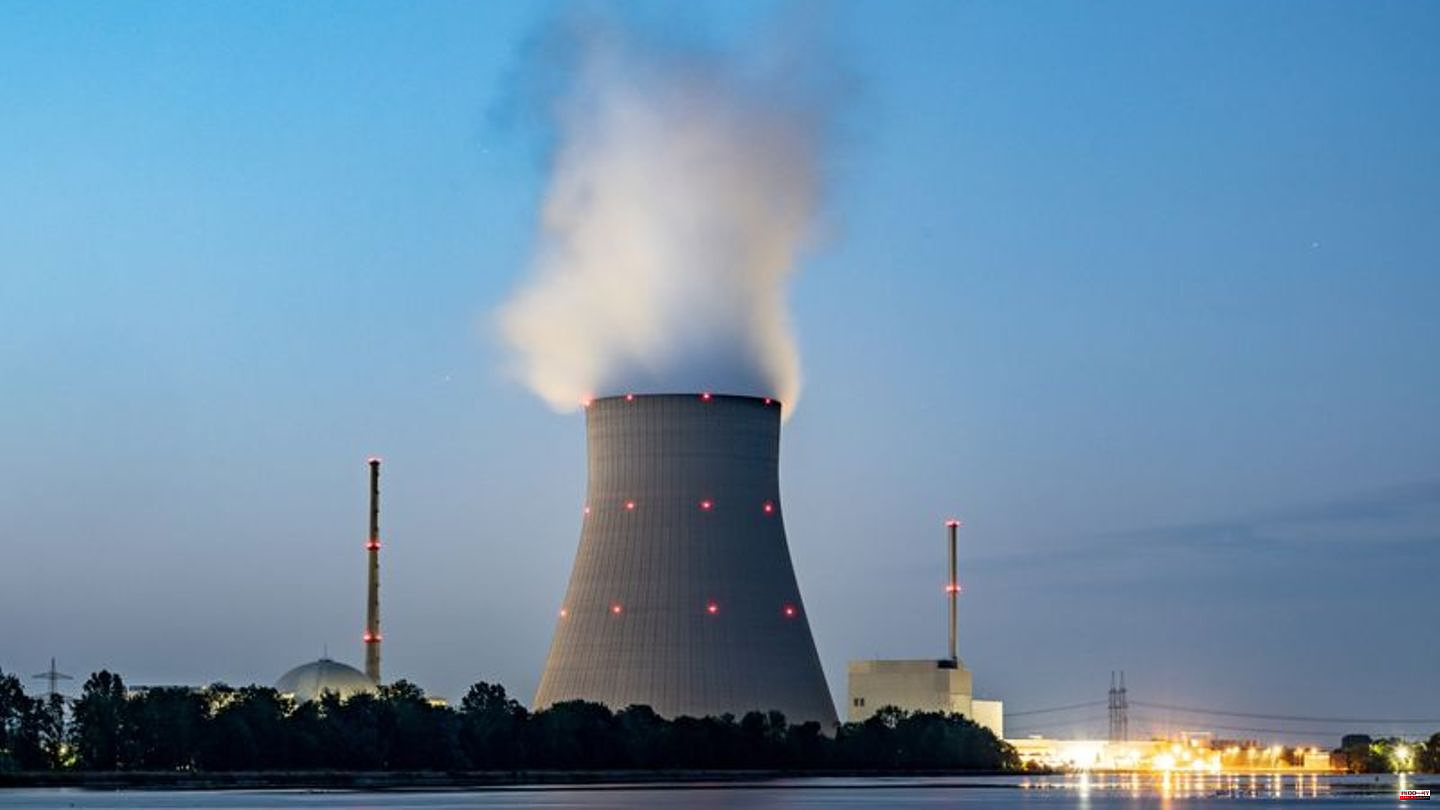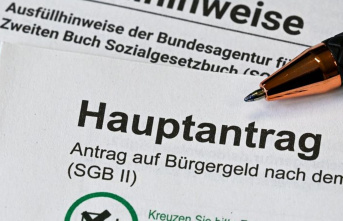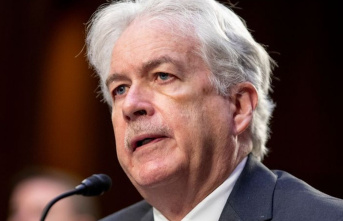Threatening energy shortages, rising prices: In Germany there is a controversial debate about the continued use of nuclear power. In view of the fact that Russia is supplying less gas, there are considerations of extending the operating times of the three remaining nuclear power plants. The federal government has scheduled another stress test for the security of the power supply - on the basis of which a decision will be made as to whether the nuclear power plants should run a little longer.
The current legal situation stipulates that Isar 2 in Bavaria, Emsland in Lower Saxony and Neckarwestheim 2 in Baden-Württemberg will go offline on December 31, 2022. After that, the operating license expires. Some hope to cushion the lack of gas a little by extending the so-called stretching operation.
How does the stretching work?
The operating cycle of a reactor core is normally about one year without interruption. After the expiration, the reactor is shut down and about the oldest quarter to third of the spent fuel elements in the reactor core are exchanged for new ones.
During nuclear fission, slow neutrons collide with uranium 235, causing it to break up into lighter nuclei. Energy is released in the form of fast neutrons. In normal operation, some of these fast neutrons are slowed down by adding boric acid to the coolant, for example, in order to be able to split more atomic nuclei better. Over time, the concentration of boric acid is continuously reduced. At some point the natural end of the cycle is reached.
In stretch mode, the reactor core is used beyond the end of the cycle. Lowering the coolant temperature increases the water density between the fuel rods. This also slows down the fast neutrons that are produced during nuclear fission.
In this way, the reactor core can be used for around 80 to 90 days beyond its actual operating cycle. But: It gradually loses power - around 0.5 percent a day, according to the Society for Plant and Reactor Safety. After 80 days, it would still be at about 60 percent of its designed capacity. By then at the latest, new fuel elements would have to be used.
In short: during stretching, the residual energy of the fuel rods should be used. Isar 2, for example, has been back on the grid since mid-October 2021 with 48 new fuel elements "for the last operating cycle", as the operator, the Eon subsidiary PreussenElektra, announced at the time.
Is there additional electricity due to stretching?
There is a variety of information about this. The Technical Monitoring Association (TÜV) Süd, for example, assumes 2.2 terawatt hours (TWh) of electricity in 80 days of stretch operation for the Bavarian site Isar 2, as stated in its April assessment on behalf of the Bavarian state government.
On the other hand, the test report by the Green-led Federal Ministries for the Environment and Economics/Climate in March comes to the conclusion that the stretching operation does not bring any additional quantities. By the end of the year, the three nuclear power plants would generate less energy than originally planned "in order to be able to continue producing electricity in the first quarter of 2023 beyond December 31, 2022".
The Kerntechnik Deutschland Association (KernD) describes this statement as "incorrect". "Stretching operation means using fuel beyond the planned end of the cycle and thus producing additional amounts of electricity," according to the statement. Neckarwestheim-2 operator EnBW also makes it clear: The system output will not be reduced before the start of a stretching operation.
According to nuclear physicist and Greenpeace nuclear expert Heinz Smital, the electricity produced during stretching is actually an additional amount. But experiences with the decommissioned Gundremmingen nuclear power plant in Bavaria, among other things, have shown that the electricity produced is not particularly significant.
The last Gundremmingen block C was taken off the grid on December 31, 2021. 76 days earlier, the kiln had gone into drafting operation. According to Smital's evaluation, 2 TWh of electricity have been generated in the meantime. When it was shut down, the reactor still had a little more than 70 percent of its maximum output. Continued operation would therefore have been able to supply an estimated 0.5 TWh of electricity.
If you take this 2.5 TWh additional electricity and speculate that each of the three current reactors could supply the same amount of electricity, these 7.5 TWh would cover just 1.4 percent of the total electricity production in 2021 (518 TWh). According to the Federal Statistical Office, 65.2 TWh of natural gas were fed into the grid last year.
What do the operators say?
A stretching operation is also an economic consideration for the nuclear power plant operators EnBW (Neckarwestheim 2), RWE (Emsland) and the Eon subsidiary PreussenElektra (Isar 2): On the one hand, less electricity is continuously generated and sold due to the power consumption, on the other hand, the fuel rods are getting better exploited.
EnBW, for example, wants to start stretching operations in the fall. "The system will be switched off by the end of 2022 at the latest when the output is already reduced," said the German Press Agency in mid-August.
The other two operators, on the other hand, initially did not want to let anyone look at the cards as to when and whether they were planning to start stretching operations before the end of the year. Should the federal government decide to extend the running time in the stretching operation, Eon boss Leo Birnbaum was recently open to corresponding discussions with politicians. "In any case, it shouldn't fail because of us," he recently told the news magazine "Spiegel".
The federal government may soon know more. A spokeswoman for the Ministry of Economics said on Sunday: There is still no final stress test result, the investigation is ongoing. When the results are final, they will be presented.












